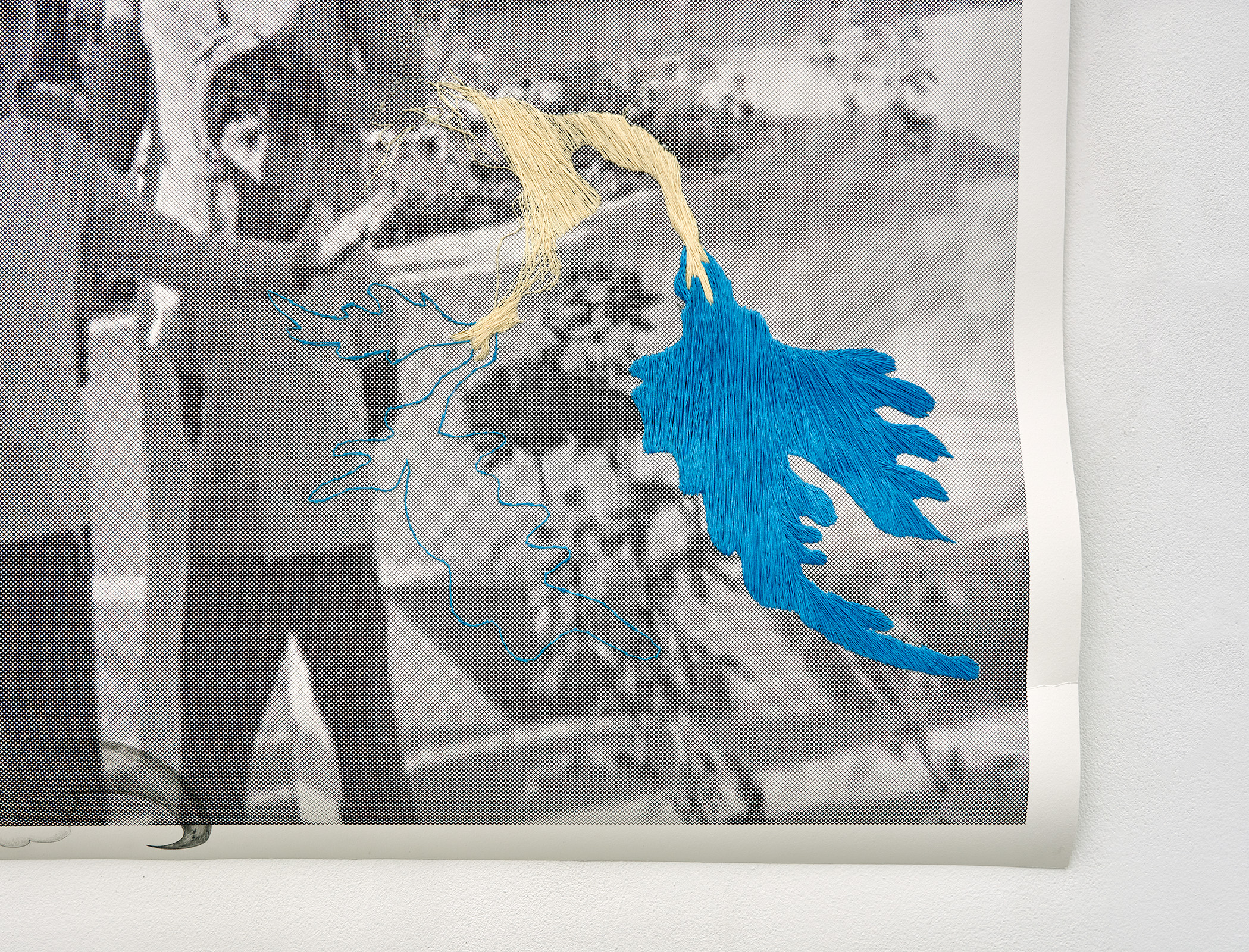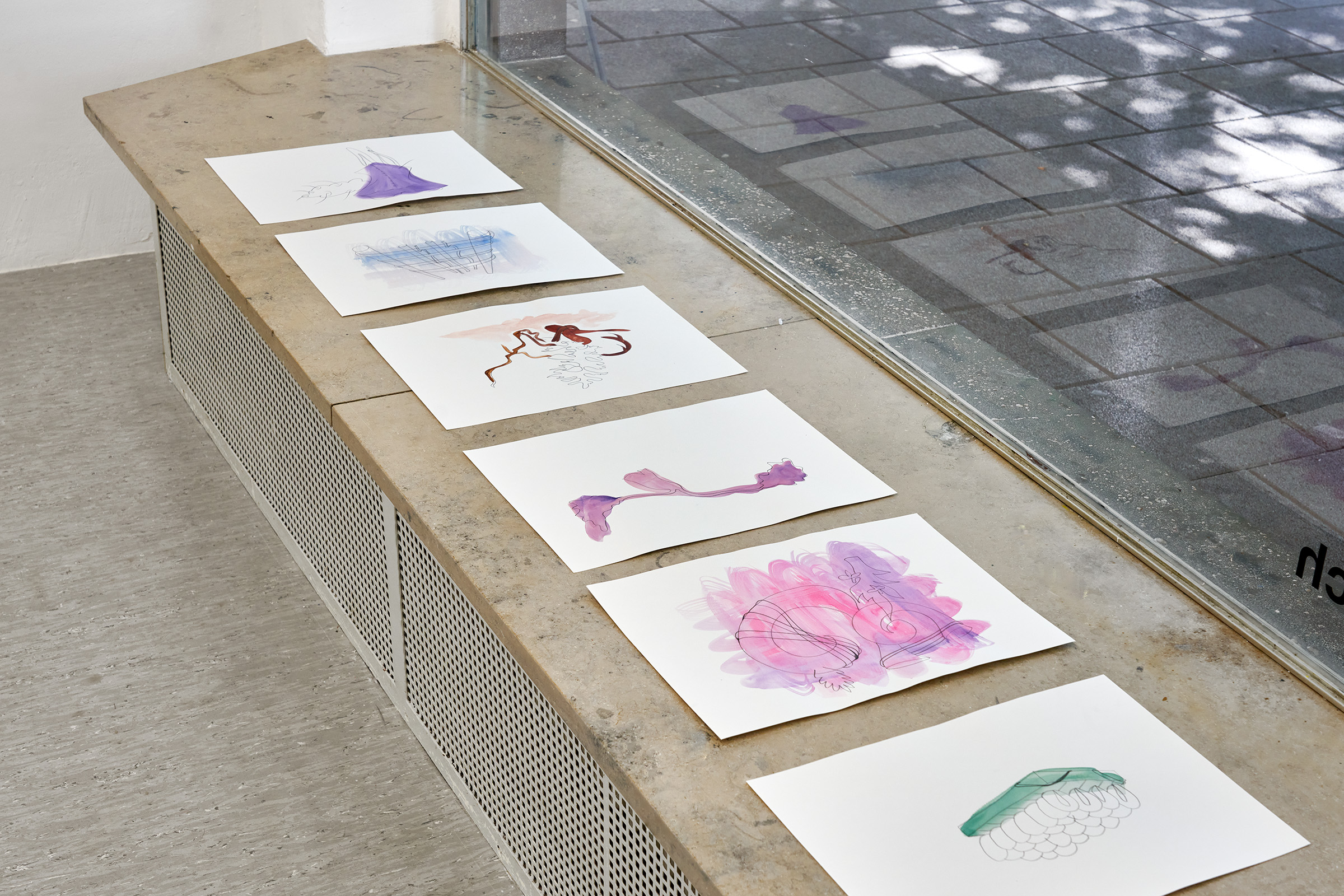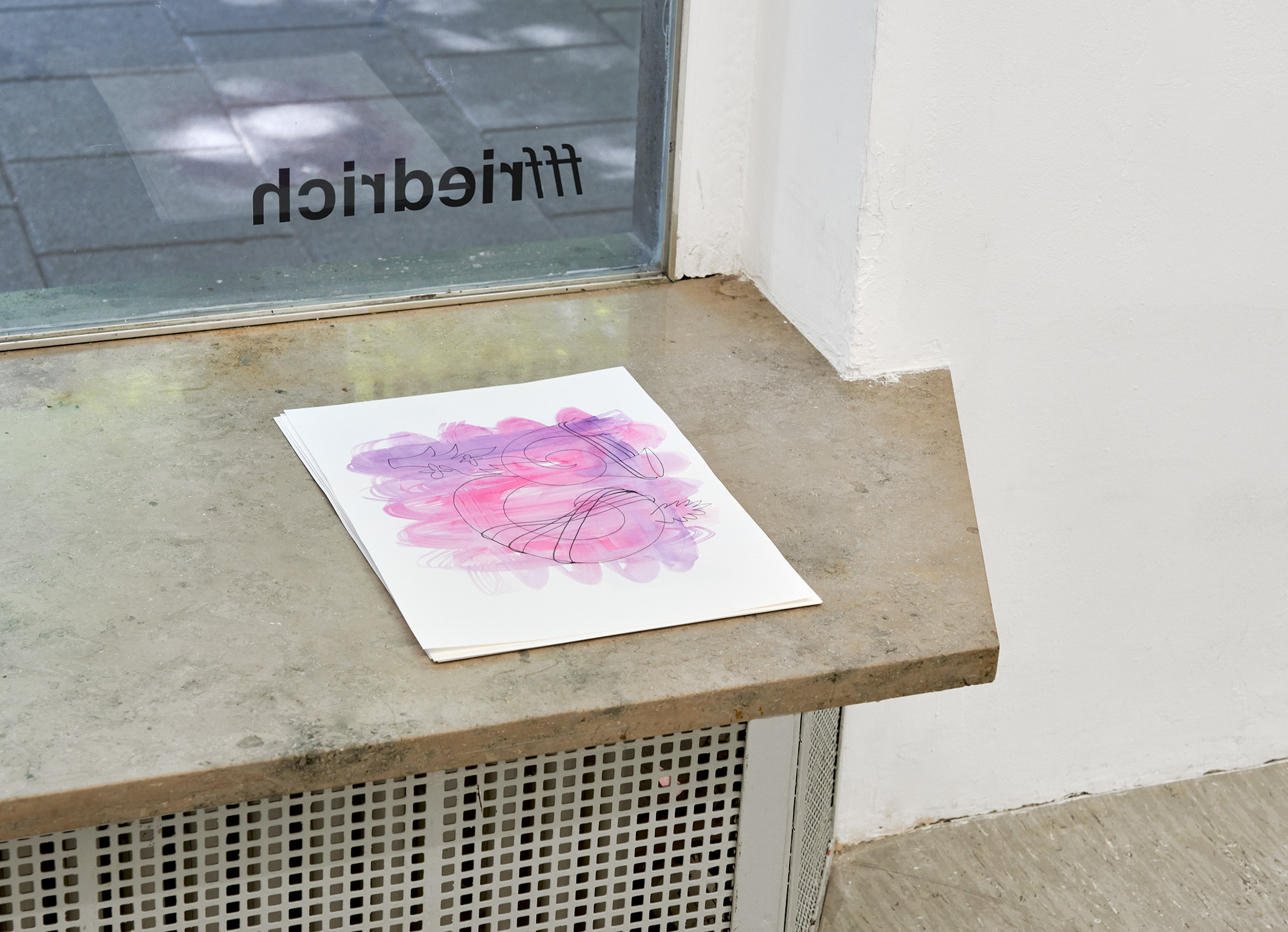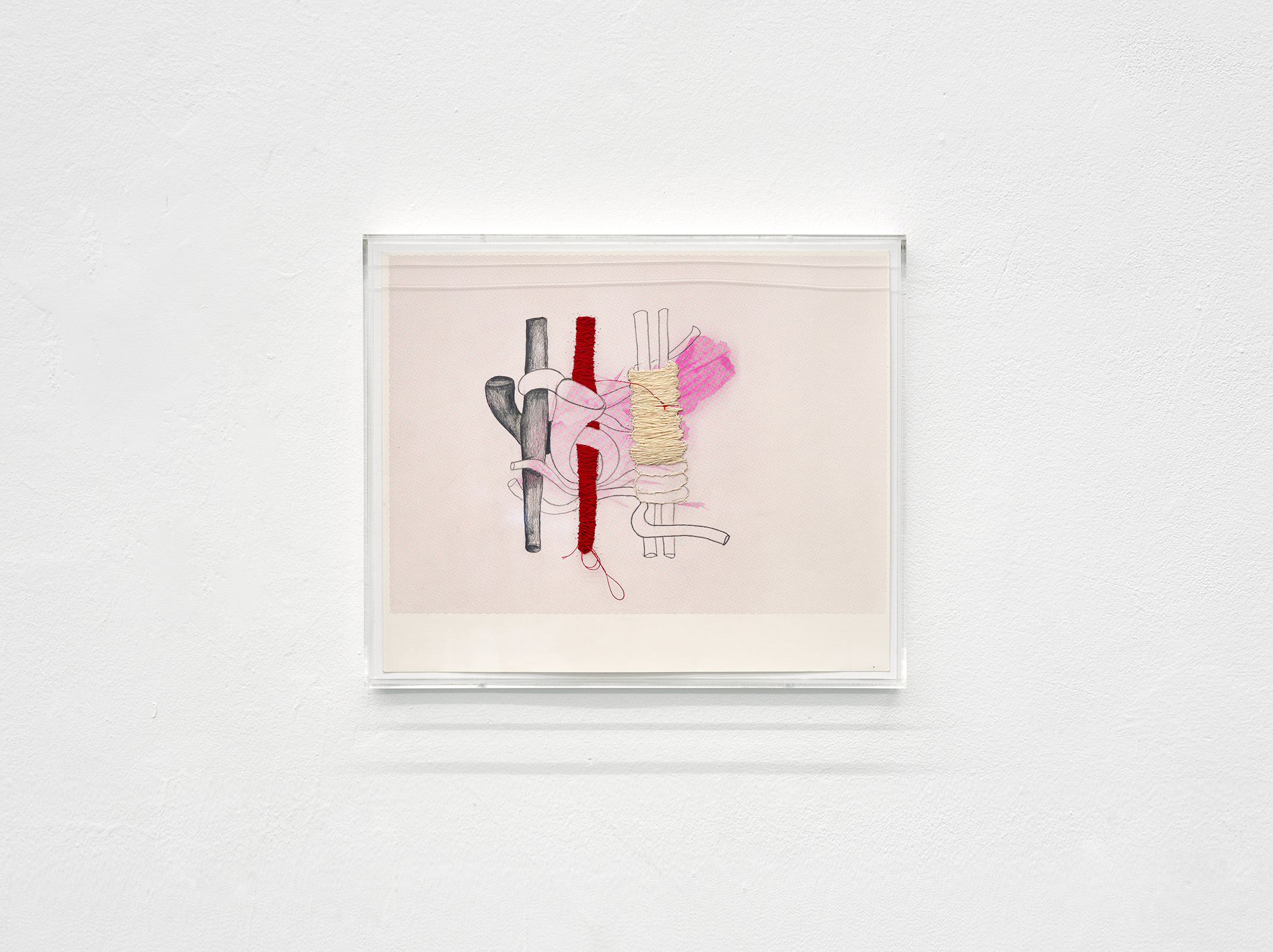KNIFE AND COMB
Elisaveta Braslavskaja
curated by Anna Marckwald
10.06. - 15.06.2022

Photos: Jens Gerber
KNIFE AND COMB
Elisaveta Braslavskaja
Sharp, the brightly-coloured yarn permeates delicate parchment paper, the stitches’ repetition forming ornamental structures and thus linking it to the underlying, slightly blurred but clearly translucent print of a black and white photograph. Though the embroideries seem to merely serve as a connecting link, they simultaneously bear a destructive effect on the fragile paper. Each stitch, thought its intention may have been cohesive, nevertheless destabilises the sensitive paper structure, which eventually threatens to tear.

In her practice, Elisaveta Braslavskaja combines materials and techniques from seemingly diverging contexts. Ornamental embroideries, formally inspired by Persian carpet art and miniature painting, interweave two-dimensional layers to sculptural objects. By over-blending the coarse grid structure of prints - sometimes adding hand drawings - and then piercing them with coloured thread, printing technique, sketch and hand embroidery fusion in a new form. The underlying stucture of the grid created by the print becomes the point of connection to the cited textile practices, where comparably screened fabric often forms the carrier. Yet, the manually produced embroideries diametrically oppose the reproduction strategies of the industrial printing techniques used. Like gestural marks, they trace the artists’ presence and indicate a specific current state, while also reflecting on entangled histories.


Braslavskaja's works carefully examine visual narratives found in both collective and private pictorial worlds. Accurately, individual motifs are extracted from their typical context, dissected in great detail and reinterpreted - without claiming to normatively define them. The exact observation and formal investigation of traditional imageries and practices form both the starting point and the subject of her artistic approach. Here, the ambivalent history of ornamentation constitutes a central field of interest. Due to their seemingly only decorative function long distincted from a fine arts context, Braslavskaja transforms ornamental forms into singular, abstracted ones, drawing them from their additive origin into the present, while preserving their agency and specific history. In the work "Dast-Bāf IV" (farsi hand-knotted) the organic shapes of the acanthus leaf, whose idealised, ornamental translation can be found on Corinthian capitals since the fifth century, are complemented by graphic drawings. These are inspired by micrographs of the anatomy of rugs and diagrams explaining their manufacture. Plant and textile elements seem to intertwine, literally knot together and metamorphose collaboratively. The origins of the carpet, both technical and motivic, rather than the product itself, become the sujet, and thus contribute to a revision of craft as a source of shared knowledge.
The practice of Elisaveta Braslavskaja reads like a search for traces, like a constant interplay between zooming in and out. Her works are capable of both disintegrating and connecting, creating distance and intimacy. "Knife and Comb", the two central instruments of the practice of carpet knotting, which is thematically essential for her work, symbolise this ambivalence between sharp and tender. The exhibition, featuring a new body of work, aims to create an open yet intimate frame that adapts on Braslavskajas' approach: meticulous and poetic, observant and imaginative.
Anna Marckwald
![]()
![]()
![]()
![]()










Photos: Jens Gerber
Opening:
Friday, 10.06.2022 from 6pm
Opening hours:
Saturday, 11.06. + Sunday 12.06. 12am - 7pm
13. - 15.06. by appointment
fffriedrich
Alte Mainzer Gasse 4-6
60311 Frankfurt

